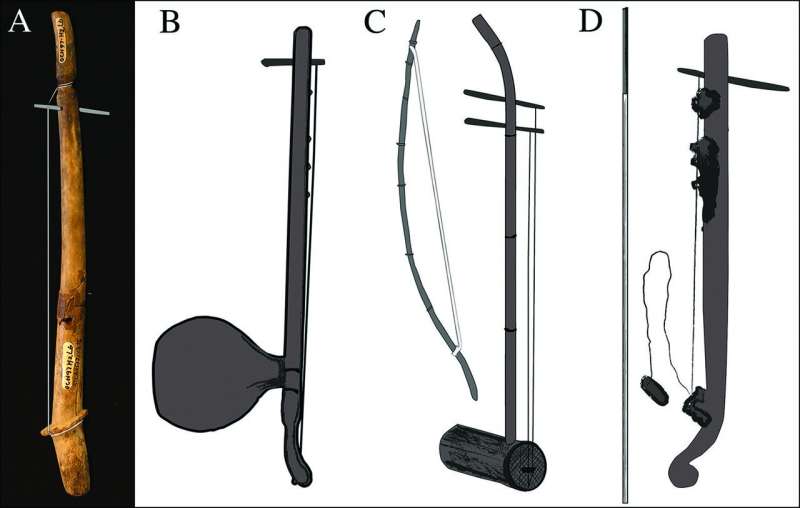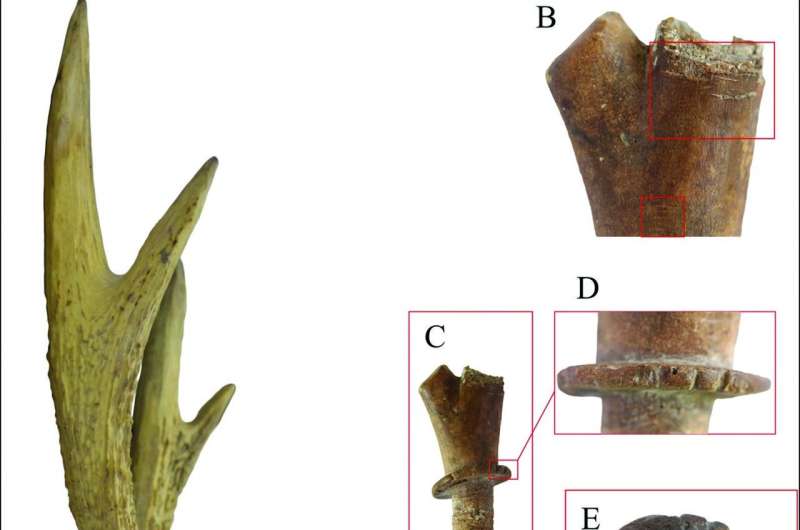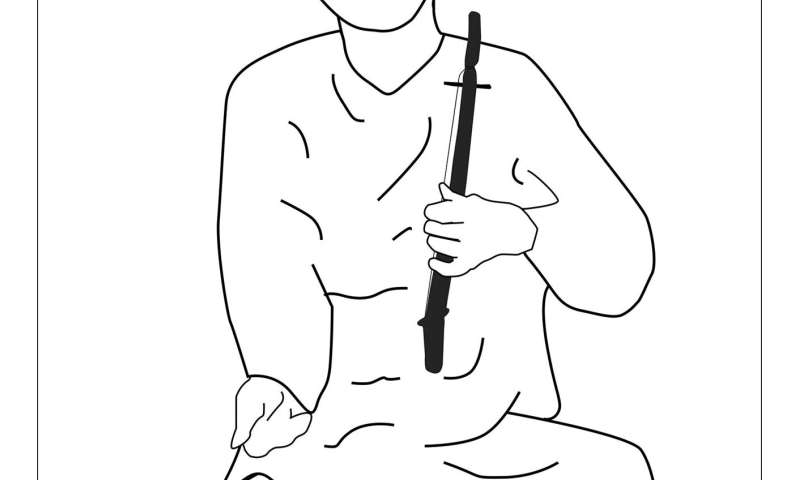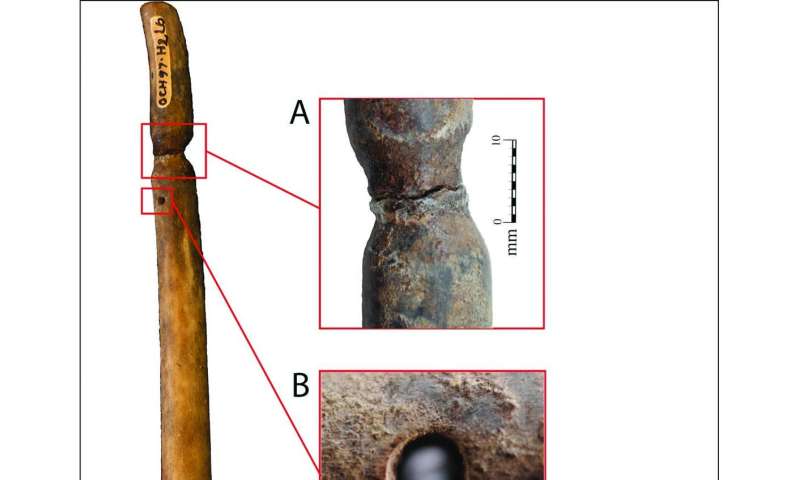This article has been reviewed according to Science X's editorial process and policies. Editors have highlighted the following attributes while ensuring the content's credibility:
fact-checked
peer-reviewed publication
proofread
2,000-year-old stringed instrument uncovered in Vietnam

Researchers have recovered and studied archaeological evidence of an ancient stringed musical instrument crafted from deer antler in southern Vietnam.
Lead researcher and Ph.D. student Fredeliza Campos from The Australian National University (ANU) said the artifact is at least 2,000 years old—dating from Vietnam's pre-Óc Eo culture along the Mekong River.
"This stringed instrument, or chordophone, is one of the earliest examples of this type of instrument n Southeast Asia," Ms. Campos said.
"It fills the gap between the region's earliest known musical instruments—lithophones or stone percussion plates—and more modern instruments.
"It would've been around 35cm long and had a hole at one end for a peg, which would've been important for tuning. It also had what looks like a bridge to support the string.
"No other explanation for its use makes sense."

Ms. Campos and her collaborators, Vương Thu Hồng from Long An Museum in Vietnam and Jennifer Hull, from ANU, analyzed more than 600 bone artifacts.
"We could not find anything remotely similar, both in size and how the deer antler has been shaped," Ms. Hull said.
"This also suggest that the artifacts were made by specialists who are probably musicians themselves."
The artifacts were found at the archaeological site of Gò Ô Chùa, in Long An province, Southern Vietnam. Three identical bronze bells that were most likely part of a burial were also found.
"It is clearly established that music played an important role in the early cultures of this region. The striking similarities between the artifacts we studied and some stringed instruments that are still being played suggest that traditional Vietnamese music has its origins in the prehistoric past," Ms. Campos said.
It is unclear how the instrument might have been played, or exactly what sound it might have made, but Ms. Campos believes the methods might have been similar to contemporary Vietnamese musical instruments such as the K'ný.
-

How the artifact may have been played. Credit: the authors -

Credit: Antiquity (2023). DOI: 10.15184/aqy.2022.170
"The K'ný is a single string bowed instrument that is uniquely controlled by the player's mouth, which also acts as a resonator. It can play a wide variety of sounds and tones, much more than a chromatic scale you often hear on a piano," Ms. Campos said.
The likely source of the antler used to craft the instrument is the Sambar deer of the Indian hog deer, native to mainland Southeast Asia. The research is published in the journal Antiquity.
More information: Fredeliza Z. Campos et al, In search of a musical past: evidence for early chordophones from Vietnam, Antiquity (2023). DOI: 10.15184/aqy.2022.170
Journal information: Antiquity
Provided by Antiquity





















